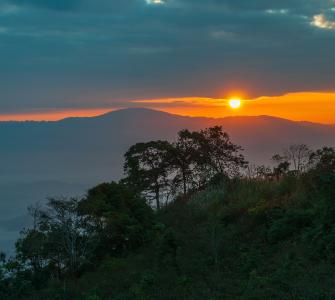Peru is one of the ten most biodiverse countries in the world and this great biological diversity is mainly located in its protected areas, many of which are recognized as UNESCO Natural World Heritage Sites. The government of Peru, through the Ministry of the Environment and the National Service of Natural Areas Protected by the State (SERNANP) is directing efforts to conserve these protected areas and pursue sustainable development of the natural resource landscape in Peru.
Currently, protected areas in Peru cover approximately 17% of the national territory. These spaces contribute to improving quality of life for people through the provision of ecosystem services such as water, food, energy, and support mechanisms for adaptation to and mitigation of climate change, and provide space for the stewardship of the cultural and spiritual knowledge of indigenous peoples and local communities. Effective management of protected areas is therefore vital for healthy, resilient, and productive ecosystems that provide vital resources to local populations.
The National System of Natural Areas Protected by the State (SINANPE) aims to contribute to the sustainable development of the country, through the conservation of a representative sample of biological diversity. The organization will help sustain these protected areas thereby to guarantee a continuation of their environmental, social, and economic benefits to society. Diverse and innovative financing mechanisms are needed to sustain SERNANP’s management of these valuable protected areas. A successful search for new economic mechanisms and the strengthening of existing mechanisms will depend on a collaboration across various sectors of the economy, including the government and private sector.
To address this challenge, SERNANP has begun the Peruvian Natural Heritage Initiative in the Amazon biome (PdP-Amazon Initiative), with the aim of ensuring the financial sustainability of 38 protected areas in the Amazon biome (86% of SINANPE or 17 million hectares), through implementation and consolidation of economic mechanisms that manage to cover the financial gap identified for these protected areas, of roughly US$ 140 million over a ten-year timeframe.
Conservation Strategy Fund (CSF) supported this work by assessing the economic potential of the protected areas in order to promote greater collaboration across sectors. This initiative was solidified by the results of a CSF analysis, factoring in both the provision of ecosystem services (supply analysis) and the interests of potential allies interested in collaboration (demand analysis). CSF also developed a strategy for implementation of the mechanism in protected areas of the Amazon biome with the greatest potential for success.
The CSF team provided recommendations for strengthening current financial mechanisms, a portfolio of potential stakeholders interested in collaborating on this contract, and a roadmap to accompany the process, and also conducted three focus groups to validate the principal outcomes.
The main findings of the CSF analysis include, but are not limited to:
- Management contracts provide a sustainable capital flow to meet certain objectives in managing protected areas and managing to reduce environmental impacts.
- There is physical and financial potential to implement payment mechanisms for ecosystem services focused on REDD+, entrance fees, and MERESE (Mecanismos de Retribución por Servicios Ecosistémicos, Remuneration Mechanisms for Ecosystem Services) that can be incorporated within the framework of management contracts, in the following protected areas: Pacaya-Samiria, Allpahuayo Mishana, Yanachaga- Chemillén, from Tingo María, San Matías-San Carlos, Bahuaja-Sonene, Otishi, Alto Purús, Sierra del Divisor, and Matsés.
- Compared to other Latin American countries, administration contracts in Peru have a better established regulatory structure than other similar models (collaborative agreements between the private and public sectors).
Within the framework of the PdP-Amazon Initiative, the Project "Securing the Future of Peru's Natural Protected Areas" was designed and executed with resources from the Global Environment Facility (GEF), implemented by the World Wildlife Fund (WWF) accredited agency and implemented by SERNANP through PROFONANPE.
Photo Credit: Shutterstock.com

